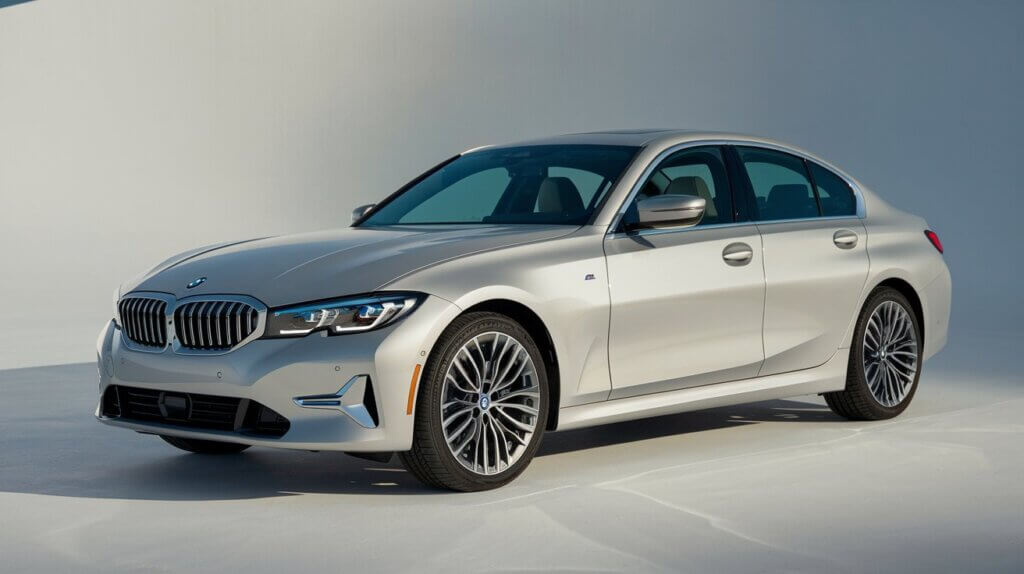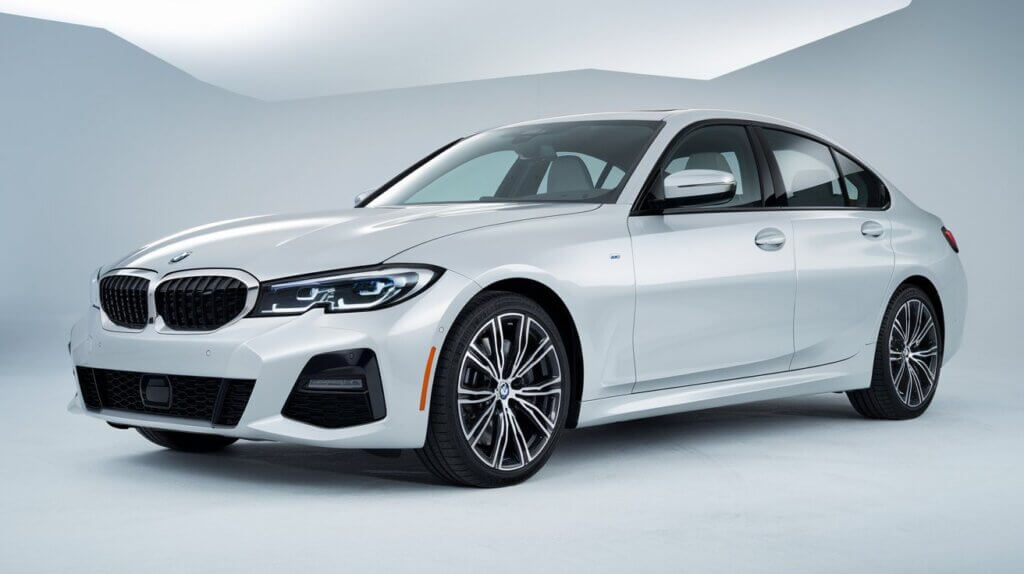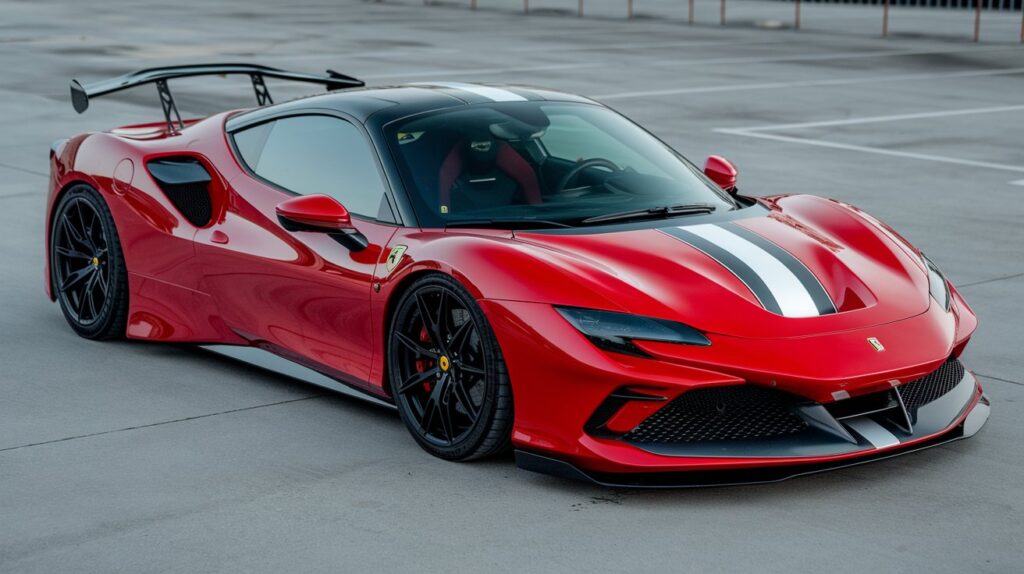Does the 2025 BMW 3 Series Still Set the Standard?
For nearly 50 years, the BMW 3 Series has set the bar for what a compact luxury sport sedan should be. Since its inception in 1975, it has consistently delivered a refined blend of precise German engineering, athleticism, and premium comfort. The 2025 model continues this tradition while subtly updating the package for today’s tech-savvy and performance-oriented buyer. But in a segment teeming with fresh rivals—from the Mercedes-Benz C-Class to the Genesis G70—does the new 3 Series still command its throne?
According to BMW USA, the 2025 3 Series isn’t a radical reinvention. Instead, it refines the eighth-generation G20 platform, introduced in 2019 and refreshed in 2023, with more polished tech and design tweaks. BMW’s goal is clear: keep the sedan familiar for loyalists while adding enough modern edge to stay ahead of evolving buyer expectations. Let’s dive into how well that strategy plays out.
Table of Contents
Powertrain and Performance: Three Distinct Flavors of Driving Pleasure
BMW retains a familiar three-trim structure for 2025: the base 330i, the plug-in hybrid 330e, and the performance-oriented M340i. Each model caters to a different buyer, from efficiency-minded commuters to weekend track enthusiasts.
The 330i is powered by a 2.0-liter turbocharged four-cylinder that produces 255 horsepower and 295 lb-ft of torque. This setup enables a brisk 0–100 km/h time of about 5.6 seconds with rear-wheel drive. It’s an engine that balances performance and refinement—ideal for drivers who want responsive power without sacrificing daily comfort.
The 330e adds electrification to the mix by pairing the same turbo-four with an electric motor, resulting in a combined 288 horsepower and 310 lb-ft. It delivers an EV-only range of about 35 kilometers (22 miles), which is practical for short daily drives. Notably, the transition between electric and gas power is seamless, and the car maintains BMW’s signature balance and sharp steering.
The lineup culminates in the M340i, a performance sedan that flirts with M-car territory. Its 3.0-liter inline-six, assisted by a 48V mild-hybrid system, puts out 382 horsepower and 369 lb-ft of torque. A 0–100 km/h sprint takes just 4.4 seconds. The power delivery is linear, and the engine soundtrack is rich and sporty, especially in Sport mode. Combined with an 8-speed ZF automatic that shifts with precision, this trim offers a driver-centric experience that’s tough to beat.
All trims offer the option of BMW’s xDrive all-wheel drive, enhancing traction and all-weather usability. The 3 Series chassis remains one of the best in the business—tight yet forgiving, precise but not punishing. For those who crave razor-sharp responsiveness, the adaptive M suspension transforms the driving experience further.
Fuel Economy: Efficient Without Sacrificing Fun
The 3 Series demonstrates how performance and efficiency don’t have to be mutually exclusive. Here’s what the EPA estimates show:
- 330i RWD: 29 mpg combined
- 330e PHEV: 75 MPGe electric, 28 mpg hybrid
- M340i RWD: 26 mpg combined
These numbers are not just impressive on paper. In real-world testing, particularly in urban environments, the 330e shines. Commuters with access to charging infrastructure can significantly reduce fuel consumption, while still benefiting from gasoline backup for longer trips. Meanwhile, the M340i’s efficiency is notable considering its output—highlighting how far BMW has come in balancing performance with responsibility.
Exterior Design: Evolution Over Revolution
BMW hasn’t radically altered the 3 Series’ look for 2025, and that’s a good thing. The brand’s controversial oversized grille trend hasn’t made its way here—instead, you get tasteful upgrades: reshaped LED headlights, a cleaner front fascia, and redesigned bumpers that subtly modernize the car’s profile.

New wheel designs and paint finishes—like Arctic Race Blue and Skyscraper Grey—add more individuality. The M340i gains sportier visuals with Cerium Grey trim, aerodynamic touches, and unique alloy wheels. Twin exhausts and an M-specific mesh grille lend it a more aggressive presence.
While these design tweaks are modest, they enhance the car’s already sleek silhouette and reinforce its sporting identity without venturing into overstyled territory. It’s a car that looks expensive and purposeful without being flashy.
Interior and Technology: Digital Advancements Meet BMW Minimalism
Open the door, and you’re greeted by a cabin that feels both futuristic and familiar. Dominating the dashboard is the new iDrive 8.5 system, combining a 12.3-inch digital instrument cluster with a 14.9-inch touchscreen in a seamless curved panel.
This interface is snappy and customizable, with an intuitive layout and natural voice recognition. It supports wireless Apple CarPlay and Android Auto, and over-the-air updates ensure the software stays current. You can also configure widgets, adjust ambient lighting, and interact with the system via touchscreen, rotary dial, or voice.
However, not all changes are universally loved. BMW’s decision to eliminate most physical buttons—including for climate controls—may frustrate traditionalists. While the interface is clean, some basic functions now require multiple taps, which can be distracting on the move.
Material quality, though, remains exceptional. Even base trims come with high-grade synthetic upholstery (Sensatec), aluminum or wood inlays, and soft-touch plastics. Step up to higher trims and you’ll find Vernasca leather, open-pore wood, and a Harman Kardon audio system that fills the cabin with rich, immersive sound.
Passenger space is generous for front-seat occupants. Rear legroom is adequate for the class, although taller passengers might find it tight on long rides. The plug-in hybrid’s battery slightly reduces trunk space compared to the gas models—13 cubic feet vs. 17—but it’s still practical for everyday use.
Advanced Safety and Driver Assistance: Smart Options, Solid Basics
Safety remains a priority for BMW. The 2025 3 Series comes standard with:
- Forward collision warning with automatic emergency braking
- Blind-spot monitoring
- Lane departure warning
- Rear cross-traffic alert
For more advanced autonomy, the optional Driving Assistance Professional Package adds adaptive cruise control with stop-and-go, lane centering, and low-speed Traffic Jam Assist. It’s among the smoother semi-autonomous systems available today, though it still requires hands on the wheel.
Crash test data from the 2023 model, which shares the same structure, shows top-tier scores: a Top Safety Pick from the IIHS and five stars from the NHTSA. There’s every reason to believe the 2025 version will maintain that safety pedigree.
Pricing and Value: Luxury That Still Delivers a Strong ROI
The 2025 BMW 3 Series remains competitively priced given its premium features and driving dynamics:
- 330i RWD: $45,500
- 330e PHEV: $46,900
- M340i RWD: $58,600
xDrive adds approximately $2,000 per trim. With options like adaptive suspension, leather packages, upgraded audio, and extended driver assistance, the M340i can reach $70,000. That said, the base 330i offers plenty—standard navigation, power seats, and the full iDrive suite.
Drivers seeking even more focused performance in a smaller footprint might be intrigued by the 2025 BMW M2, which packs serious thrills into a tighter package.
Pros and Cons: A Well-Balanced Luxury Sport Sedan
The 2025 3 Series continues to strike a rare balance between driving excitement, luxury, and everyday usability. Its engines are powerful and efficient, the cabin is modern and high-quality, and its driving dynamics are still best-in-class.

On the flip side, pricing climbs quickly with options, and some buyers may find the touchscreen-only climate controls less intuitive than physical knobs. Rear passenger space is competitive but not generous, and those seeking cavernous cargo or family-hauler space may prefer the X3 or 5 Series.
Still, for drivers who value precision, performance, and polish in one elegant package, the 3 Series remains a standout. If you need extra space, the BMW X7 M60i shows how BMW scales this formula into full-size luxury SUV form.
Conclusion: A Modern Classic That Still Leads the Pack
BMW could have taken a bigger risk with the 2025 3 Series—but they didn’t need to. The formula already worked. With thoughtful updates to technology, comfort, and performance, this sedan remains an aspirational choice for enthusiasts and professionals alike.
It delivers everything a modern buyer wants: responsive performance, cutting-edge infotainment, top-tier safety, and undeniable brand cachet. While alternatives may offer more rear-seat space or flashier interiors, few deliver the total driving experience the 3 Series does. It’s not just a car—it’s a continuation of a legacy.
FAQs: What Buyers Really Want to Know
1. Is the 2025 BMW 3 Series officially launching?
Yes, the 2025 model is confirmed and available for configuration on BMW’s official U.S. website. It carries forward updates from the previous refresh with improved tech and design refinements.
2. Is there an electric version of the 2025 3 Series?
Currently, only the 330e plug-in hybrid is available in the U.S. market. BMW offers a fully electric 3 Series (i3 sedan) in China, but it hasn’t been released globally.
3. How fast is the M340i compared to rivals?
The M340i’s 0–100 km/h time of 4.4 seconds is among the best in its class. It outpaces rivals like the Audi S4 and Mercedes-AMG C43 in acceleration while maintaining refinement and everyday drivability.
4. Is the 3 Series comfortable for road trips?
Absolutely. The front seats offer excellent support, the ride is well-damped even on rough roads, and cabin insulation is top-notch. It’s equally suited to long highway stretches and twisty backroads.
5. How practical is the 330e for city use?
The 330e’s electric range covers most daily commutes and short errands. It transitions smoothly to hybrid power when needed, offering a flexible and fuel-efficient urban driving solution.
6. What kind of maintenance and warranty coverage does BMW provide?
BMW includes a 4-year/50,000-mile limited warranty and free scheduled maintenance for 3 years or 36,000 miles. Plug-in hybrid components are covered under separate extended warranties.
7. Is all-wheel drive worth it on the 3 Series?
xDrive enhances traction in wet or snowy conditions without compromising handling. For drivers in colder climates or those seeking extra confidence, it’s a smart investment.
8. How user-friendly is iDrive 8.5 for everyday use?
Tech enthusiasts will love its speed and customization options, but there’s a learning curve. Some basic functions require screen navigation, though voice control and the rotary dial help minimize distraction.
9. How does the 3 Series compare to competitors like the Audi A4 or Mercedes C-Class?
The 3 Series remains the sportiest option, with sharper handling and stronger performance. The Audi A4 excels in tech value, while the C-Class leans more toward luxury and comfort.
10. What’s the next step up if I want more space or luxury?
If you need more rear legroom or cargo capacity, consider the BMW 5 Series or the X3 SUV. For top-tier luxury and seating for seven, the BMW X7 is a compelling step up.

